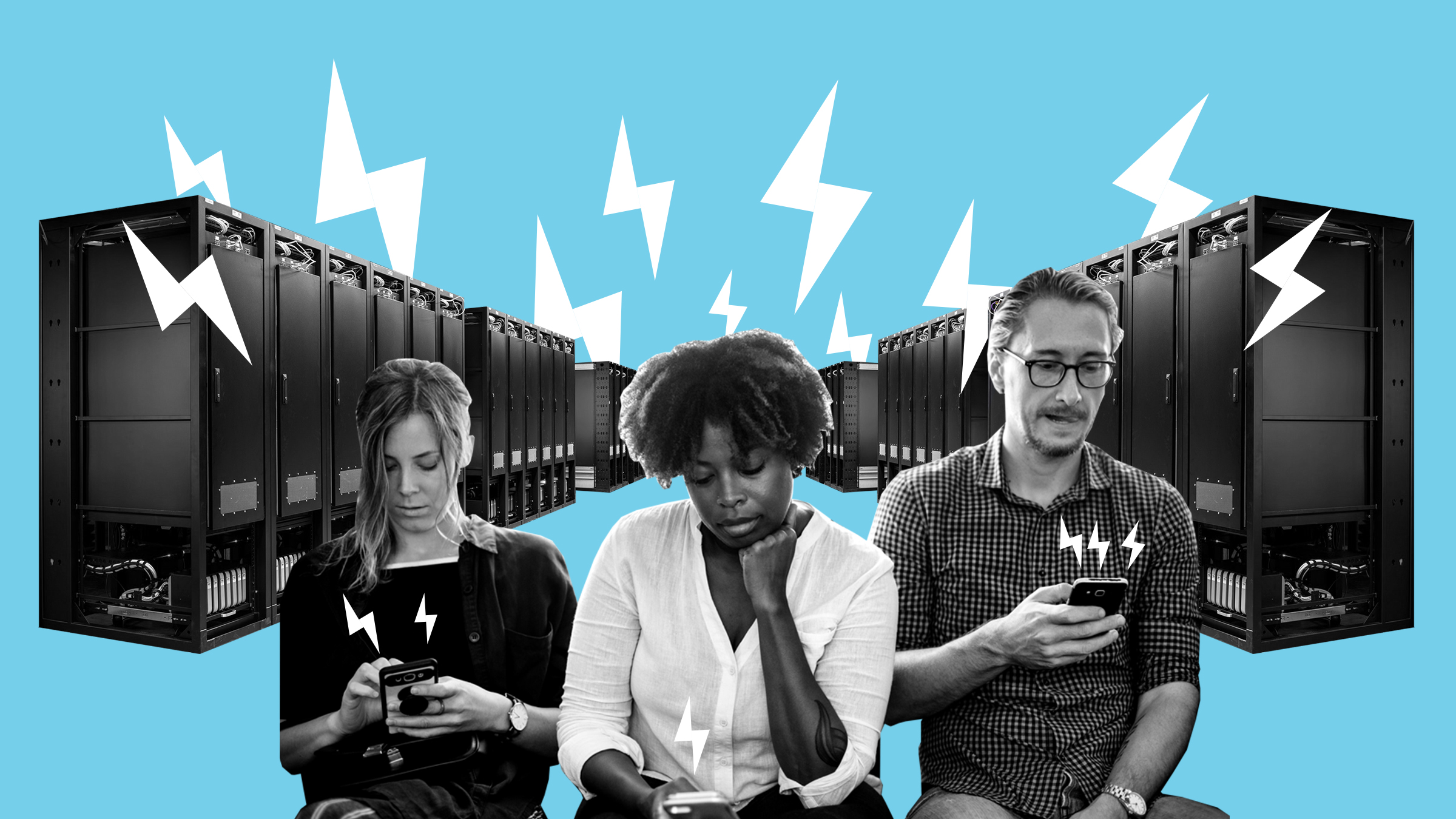A study by the Research Institute for the Finnish Economy (Etla) and Aalto University, commissioned by Sitra, indicates that the electricity consumption of the information sector is growing in Finland. The sector’s electricity consumption increased by almost 14 per cent in Finland during the period 2011-2017. The growth can be attributed to the increasing volume of internet traffic: both consumers and industry are increasingly using digital services.
The growth in internet traffic in Finnish networks has amounted to approximately 43 per cent annually during the years 2011 to 2017, increasing in volume about ninefold. The use of mobile data, on the other hand, has increased by a staggering 72 per cent annually, increasing in volume by about 25 times in the same period.
The volume of mobile data in Finnish networks is growing rapidly for at least two reasons: unlimited data subscriptions available to consumers and the major role of Finland in developing mobile technologies.
The increase in the use of data is not, however, mirrored in consumers’ electricity bills. Even though the use of mobile data has increased significantly, the annual growth in the electricity consumption of consumers’ electrical equipment was only 2.4 per cent between 2011 and 2017. The electrical equipment reviewed by the study included phones, televisions and computers, but not lighting, heating and saunas.
The energy consumption of a streaming service used by a consumer in Finland is often outsourced to a data centre located on the other side of the world, with no information available publicly about its energy consumption. This means energy consumption can take place in a country where electricity production causes more emissions than in Finland.
“In the light of research data, it is evident that, in the big picture, the significant increase in the consumption of data also translates into increased energy consumption,” says Timo Seppälä, Chief Research Scientist at Etla.
“However, it is very difficult to estimate the energy consumption of a Finnish consumer’s data use by looking at existing data – only a small fraction of the consumption can be seen in the statistics for the Finnish ICT sector.”
More up-to-date information on the information sector’s electricity and energy consumption is needed
Nevertheless, there are significant shortcomings in the data from the point of view of investigating the environmental impacts of digitisation. A major share of digital service use is not attributed to the information sector in the statistics but to other industries that make use of digital solutions. Data about energy consumption is not collected in real time; currently, the most recent available data is from 2017. In addition, there is limited data and few indicators available about public and private data centres.
“Digitisation can help in solving the sustainability crisis and can accelerate the circular economy, but the downside is the increasing consumption of energy and materials,” says Lotta Toivonen, circular economy specialist at Sitra.
“Society is becoming more digital at an enormous rate, and we need to be able to steer that development in the direction we want. For this, information on the status quo of the sector’s electricity and energy consumption is needed.”
In fact, the study suggests that reviewing the figures of businesses and states does not provide an adequate picture of energy and electricity consumption, carbon neutrality and other resource use in the information sector. The supply and value chains are distributed across the world, and high data use in Finland, for example, might consume little energy in Finland.
Viewing the supply and value chains can help us better understand the use of resources by businesses and states and the extent of the industry’s carbon neutrality. Such a review would also help us understand how much consumer electricity and energy consumption has been outsourced beyond the borders of Finland.
The Etla and Aalto University study Informaatiosektorin energian- ja sähkönkäyttö Suomessa (“Information sector’s energy and electricity consumption in Finland”) investigates what data is available on the energy and electricity consumption of the information sector and how such data can be collected. The study formed part of Sitra’s circular economy work and the Digital Disruption of Industry research project funded by the Academy of Finland.








Recommended
Have some more.